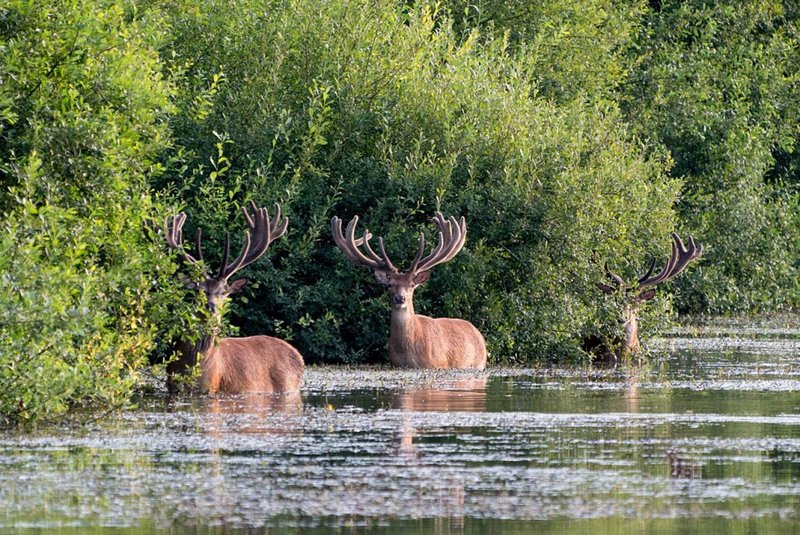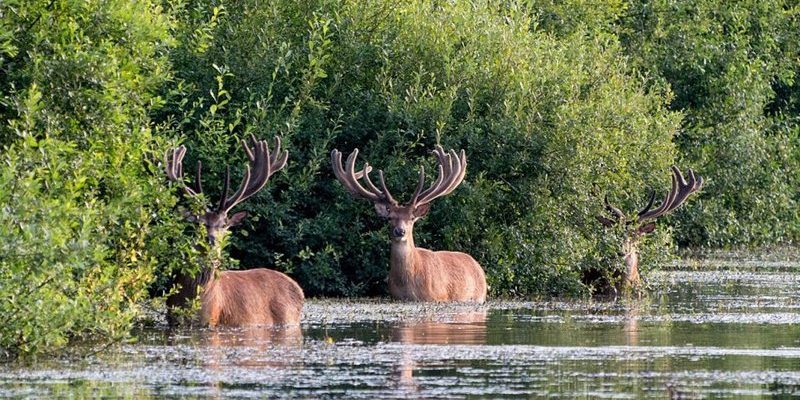
Let’s take a moment to explore the red deer’s home turf. Imagine hiking through dense forests, vast grasslands, or even rugged mountains—these are just a few of the places you might spot a red deer in the wild. Understanding their habitat and distribution can help us appreciate these animals better and the environments they thrive in. So, grab a cup of coffee, and let’s dive into the world of red deer!
Understanding the Red Deer
Before we jump into where red deer live, it’s essential to understand what makes these animals special. Red deer are one of the largest deer species, with males, or stags, boasting impressive antlers that can grow up to a meter long. These antlers aren’t just for show—they play a crucial role during the rut, the mating season, when stags compete for the attention of females, or hinds.
Red deer are social animals, often found in herds. During the spring and summer months, these herds can grow quite large, as females and their young gather together for safety and social interactions. You might be wondering what these deer need to thrive, and the answer largely lies in their habitat.
Natural Habitats of Red Deers
Red deer are incredibly adaptable in terms of where they can live. They primarily thrive in:
- Forests: Dense coniferous and broadleaf forests offer great cover and feeding opportunities for red deer.
- Grasslands: Open spaces provide excellent grazing areas, especially during the warmer months.
- Mountains: Some populations inhabit upland areas, where they can navigate rugged terrain.
In forests, red deer find shelter from predators and harsh weather. They enjoy browsing on shrubs, young trees, and grasses available in these areas. Grasslands provide rich pastures that are especially important during spring and summer when they need to replenish after winter. Mountain habitats present unique challenges but also offer safety from human activities, allowing red deer to thrive in less disturbed areas.
Geographical Distribution: Where You’ll Find Them
So, where can you find red deer in the world? The geographical distribution of red deer is quite fascinating. They are widespread across several regions, including:
- Europe: From the Scottish Highlands to the forests of Germany, red deer are commonly found across much of Europe.
- Asia: Populations exist in parts of Russia, particularly in Siberia.
- New Zealand: Interestingly, red deer were introduced here in the 19th century and have established thriving populations.
In Europe, these deer are often associated with ancient woodlands. Countries like Scotland and Norway have become famous for their red deer populations, drawing nature enthusiasts from around the globe. In Asia, they inhabit various environments, ranging from temperate forests to mountainous regions.
Subspecies and Their Unique Habitats
Red deer aren’t just one homogenous group—they actually have several subspecies, each adapted to their specific environment. For example:
- European Red Deer: This subspecies prefers the temperate forests of Western Europe.
- Sika Deer: While technically a different species, these deer often share habitats with red deer and are found in Japan and parts of Asia.
- North African Red Deer: Found in the Atlas Mountains, this subspecies has adapted to the unique Mediterranean climate.
The differences in habitat preferences can tell us a lot about how subspecies have adapted over time. For instance, European red deer thrive in lush forests, while North African red deer are well-suited to drier, rockier terrains. You might be struck by how nature shapes the lifestyle of these animals based on their surroundings.
Impact of Climate on Habitat
Climate plays a significant role in the habitat of red deer. These animals are affected by seasonal changes, which dictate their behavior, food availability, and even migration patterns. For example, during the winter months, red deer will often move to lower altitudes to escape heavy snow and find more accessible food.
Additionally, temperature changes and weather patterns can impact their habitats. A hotter summer season might limit their grazing areas, forcing them to seek out cool, shaded spots. In contrast, wetter seasons can lead to increased undergrowth, providing more grazing options. Honestly, it’s a delicate dance that highlights how interconnected wildlife and their environments are.
Human Interaction and Its Effects
Unfortunately, red deer face challenges due to human activities. Their habitats are often threatened by:
- Deforestation: Logging and land clearing for agriculture reduce the areas where red deer can live.
- Urban Development: As cities expand, the natural spaces these deer rely on can become fragmented.
- Hunting: Overhunting in some areas has drastically reduced their populations.
As red deer habitats shrink, their chances for survival also diminish. Conservation efforts are crucial to protect their environments and ensure they can thrive in the wild. Many countries have established protected areas or reserves to help offset the impacts of human encroachment.
Conservation Efforts for Red Deer
Recognizing the need for preservation, various conservation initiatives focus on red deer habitats. These efforts include:
- Protected Areas: Establishing national parks and wildlife reserves helps safeguard essential habitats.
- Public Awareness: Educating communities about the importance of red deer promotes coexistence and understanding.
- Habitat Restoration: Restoring degraded habitats can help increase food availability and shelter for red deer.
While challenges remain, dedicated initiatives show promise in protecting both red deer populations and their habitats. Supporting these efforts can make a difference not just for red deer, but for the entire ecosystem they inhabit.
In the end, understanding where red deer live gives us insight into the delicate balance of nature. From lush forests to rugged mountains, these animals rely on diverse habitats to thrive. With the impact of human activity, it’s crucial that we prioritize conservation efforts to ensure these magnificent creatures continue to roam their natural environments.
By protecting red deer habitats, we not only safeguard their future but also preserve the rich biodiversity that defines our planet. Next time you see a picture of a red deer, remember that they’re more than just beautiful animals; they symbolize the importance of caring for our natural world.

